23 Best Apps to Learn Arabic (Finding the Right Tool for Your Learning Style)

Michael Xing, Founder of Pingo AI
You want to learn Arabic, but the choices can feel overwhelming: apps, tutors, flashcards, conversation partners, and courses all promise fast progress. In the world of top language learning apps, some focus on Arabic script and grammar, others on Modern Standard Arabic or local dialects, and a few use spaced repetition or speech recognition to boost speaking and listening. Which one fits a visual learner, someone who needs daily conversation practice, or a busy beginner? This article breaks down the best apps to learn Arabic and helps you find the right tool for your learning style.
Pingo AI’s language learning app tailors short, interactive lessons to your pace and gives clear feedback so you can build vocabulary, grammar, pronunciation, reading, and speaking skills without guesswork.
Summary
- Recognition-first routines leave speaking undertrained, and app mechanics can still work when they force action, as 75% of app users report increased productivity after using an app for a month.
- Structure practice as short, concentrated speaking sprints, for example, one 5-minute Tutor Mode scenario, one 4-minute pronunciation drill, and one 3-minute shadowing clip, which together form a 12-minute unit to repeat 3–5 times per week.
- Measure output quality, not hours, by tracking the percent of phrases produced without correction, average hesitation before answering, and a weekly 2–3 minute spoken monologue, a focus supported by findings that 60% of users find apps more effective than traditional methods for task management.
- Use a concise audition checklist of five checkpoints before committing to an app: a recorded dialogue, a spoken reading of connected text, scoped feedback you can act on, explicit dialect labeling, and exportable error notes, all while keeping in mind that over 300 million people speak Arabic worldwide, so dialect clarity matters.
- Treat popularity metrics as signals, not proofs, by checking install volume and satisfaction alongside functionality. For example, apps with over 1 million downloads and a 4.5-star average rating can indicate broad adoption but still require a speaking-first audit.
- Adopt specific, repeatable habits to close the production gap: aim for five high-utility vocabulary items a day, nominate two recurring errors each week for micro-drills, and build recovery into cycles, for example, a 3-day intensive push followed by 48 hours of low-effort consolidation.
- This is where Pingo AI's AI language learning app fits in, as it addresses the production gap by offering scenario-based speaking practice, instant corrective feedback, and exportable recordings to track measurable speaking gains.
23 Best Apps to Learn Arabic
Pingo AI tops the list because it makes speaking the central habit from day one, with ultra-realistic AI voice, Tutor Mode, and scenario-driven practice that accelerates oral fluency.
Read the short descriptions below to match each app to your goals, whether that means:
- Drilling pronunciation
- Practicing dialects
- Building reading and writing skills
1. Pingo AI

Pingo AI focuses on conversation first, not flashcards, so you start producing sentences immediately. Its adaptive feedback listens to pronunciation, suggests phrasing corrections, and scales from beginner to advanced lessons, making it the practical choice for accelerating spoken Arabic.
If you want to replace passive study with deliberate speaking practice, Pingo AI is built for that exact transition.
2. Busuu

Busuu combines structured lessons with a community feedback loop that connects you to native speakers for corrections. The value here is the mutual review system, where natives correct written exercises and you return the favor, which boosts real-world accuracy and cultural nuance.
3. Mango Languages

Mango emphasizes practical usage and cultural context in its lessons, with clear grammatical explanations woven into dialogues. Libraries often offer free access, making Mango a solid option for learners who want an evidence-based course without a high subscription cost.
4. ArabicPod101

ArabicPod101 uses audio and video lessons in a podcast format, ideal if you learn best by listening and repeating. Lessons range from bite-sized dialogues to longer cultural deep dives so that you can layer comprehension with real speech patterns.
5. Lingodeer

Lingodeer pairs clear grammar explanations with interactive exercises and visual prompts, supporting both Modern Standard Arabic and dialect forms. Its lesson sequencing helps you understand why structures work, not just how to mimic them.
6. Duolingo

Duolingo offers a low-friction, gamified Arabic path that covers grammarand vocabulary in short daily bursts. It works well as a habit builder when paired with active speaking or listening practice, since the app excels at repetition and recall.
7. Memrise
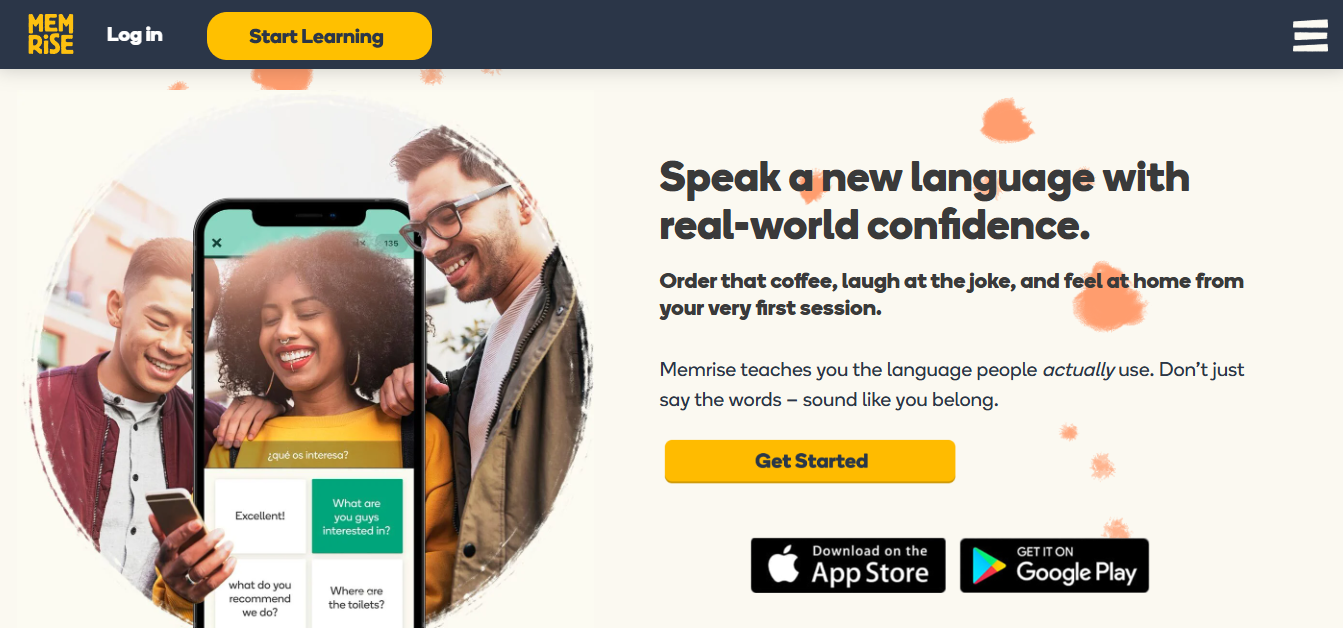
Memrise enriches vocabulary with native-speaker video clips, which teach pronunciation and cadence beyond synthetic audio. Its spaced-repetition system locks words into long-term memory while the multimedia examples keep listening skills honest.
8. HelloTalk
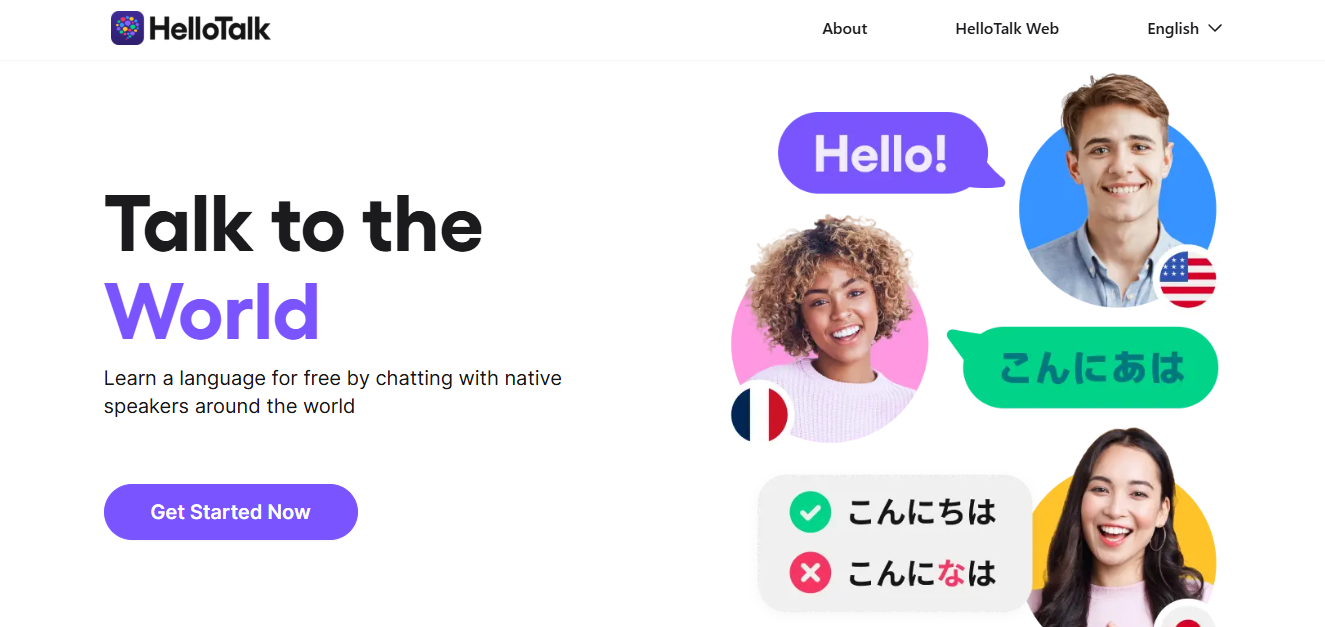
HelloTalk is a peer-to-peer exchange for:
- Text
- Voice notes
- Corrected messages
It gives you authentic conversational practice with native speakers. Use it for targeted pronunciation drills, dialect exposure, and asynchronous feedback you can replay and study.
9. Nemo Arabic

Nemo is audio-first and compact, designed for focused speaking and listening drills you can do offline. It’s practical for travel prep or phonetic training, with quick phrase review and repetition that primes your mouth for unfamiliar sounds.
10. Write It! Arabic

Write It! Arabic teaches handwriting through tracing and feedback loops that reinforce letter shapes, stroke order, and script flow. If reading the script is a barrier, this app turns letter-by-letter practice into muscle memory.
11. Arabic Alphabet (TenguLogi)

This dedicated alphabet app uses simple games to build letter recognition and early reading skills, making it ideal for absolute beginners.
Fast letter recognition is the precursor to reading:
- Signs
- Menus
- Messages in context
12. Babbel

Babbel offers concise, real-life lesson sequences and adaptive review that personalize the learning path. The curriculum prioritizes usable phrases and grammar drills that target common conversational patterns.
13. Living Language Arabic
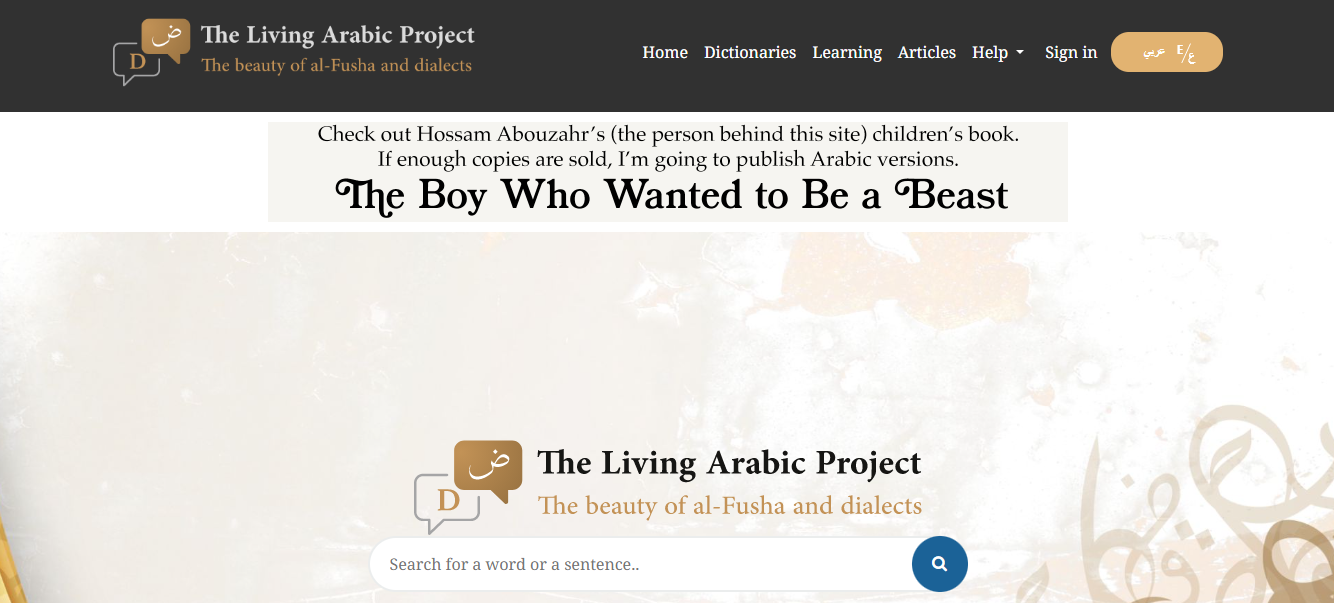
Living Language offers a comprehensive curriculum with structured audio and grammar notes, useful for learners who want a structured study plan rather than ad hoc lessons. It combines explanations, drills, and cultural context in ways that support systematic progress.
14. Rosetta Stone
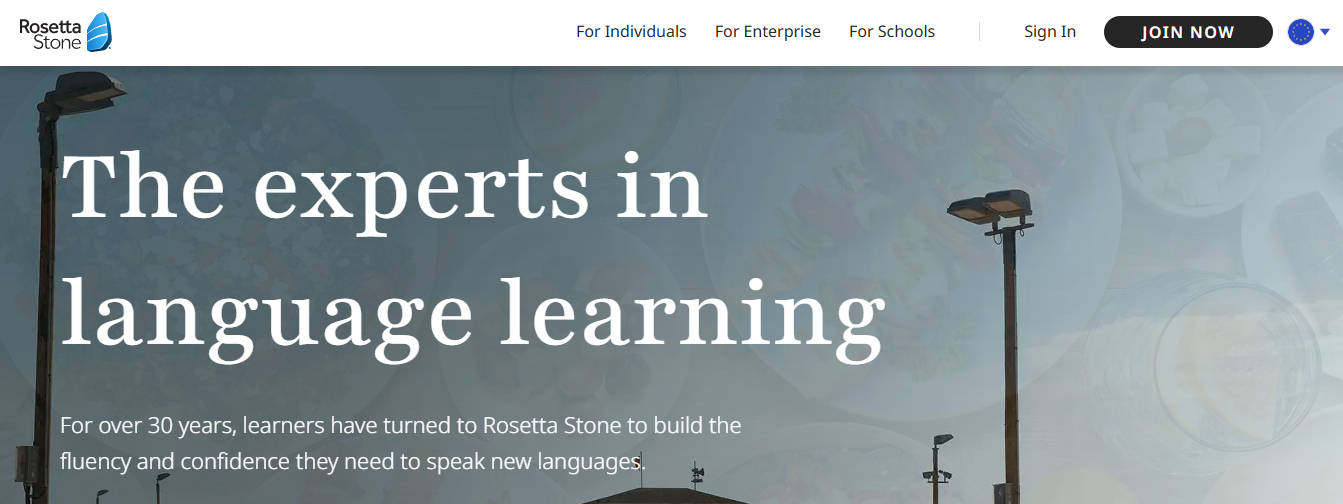
Rosetta Stone uses immersive, context-first learning and speech recognition to refine pronunciation and listening. It's a steady, immersive method that trains you to form meaning by connecting images, words, and sounds without translation, thereby strengthening intuitive language use.
15. Pimsleur Arabic

Pimsleur centers on graduated-interval recall in audio lessons, forcing you to produce answers aloud and build conversational routines. Its strength lies in developing oral fluency through active recall and spaced repetition of phrases.
16. FluentU

FluentU teaches through authentic media, from news clips to music videos, with interactive subtitles and vocabulary tools. This approach exposes you to natural speech, varied speeds, and real-life phrasing that scripted lessons often miss.
17. Arabic Alphabet PRO

Arabic Alphabet PRO goes deeper into script mechanics, offering:
- Guided stroke practice
- Pronunciation pairing
- Progressive writing exercises
It’s for learners ready to refine their handwriting and reading speed.
18. Beelinguapp
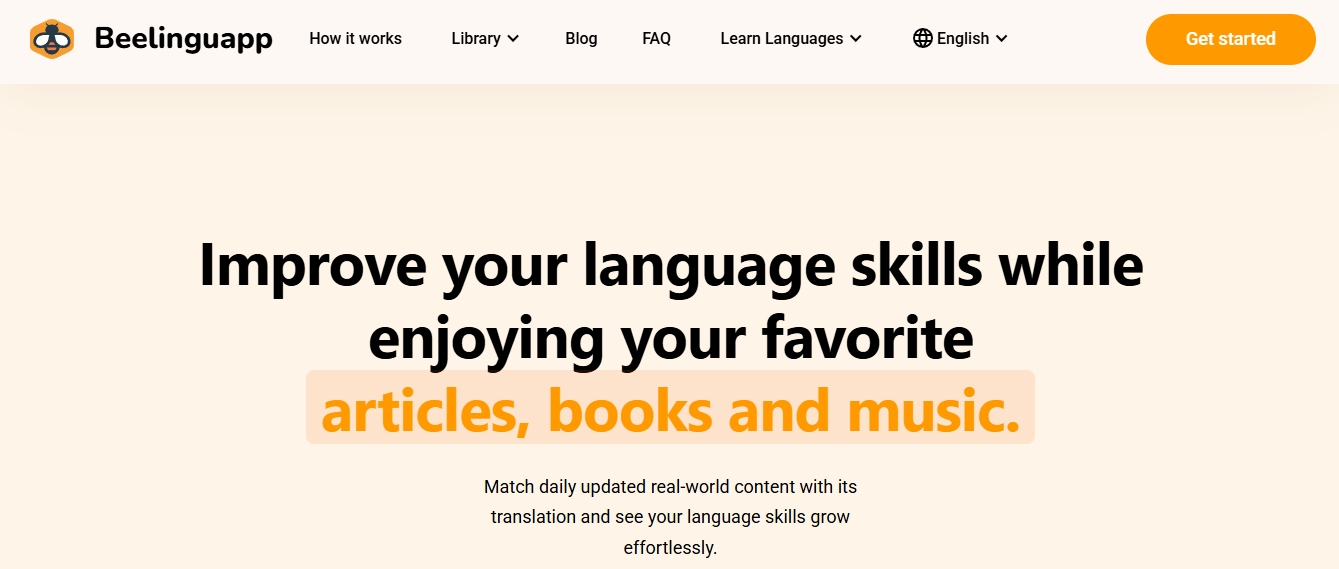
Beelinguapp displays Arabic text alongside your native language, letting you follow the narrative flow as you listen to the audio. That side-by-side method helps reading comprehension and pattern recognition simultaneously.
19. Glossika
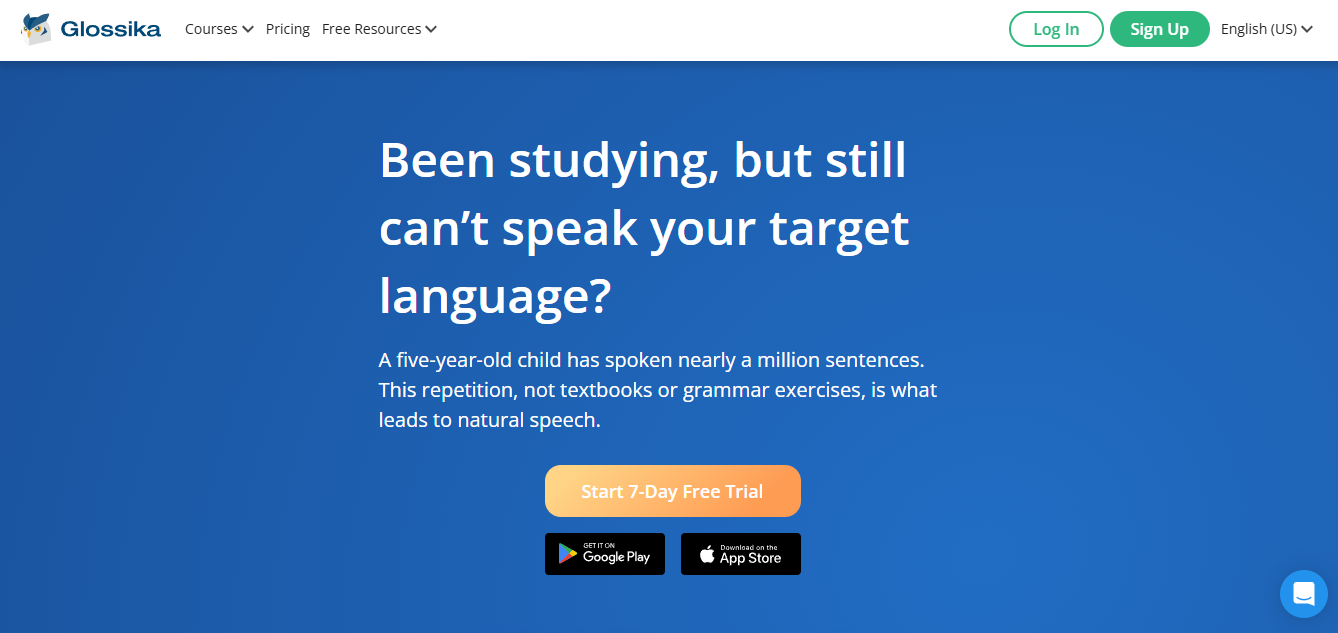
Glossika uses mass sentence repetition across contexts to internalize grammar and sentence rhythm, which is effective when you aim for fluency in MSA or a specific dialect.
The method is intensive but efficient for automating production.
20. Drops: Arabic
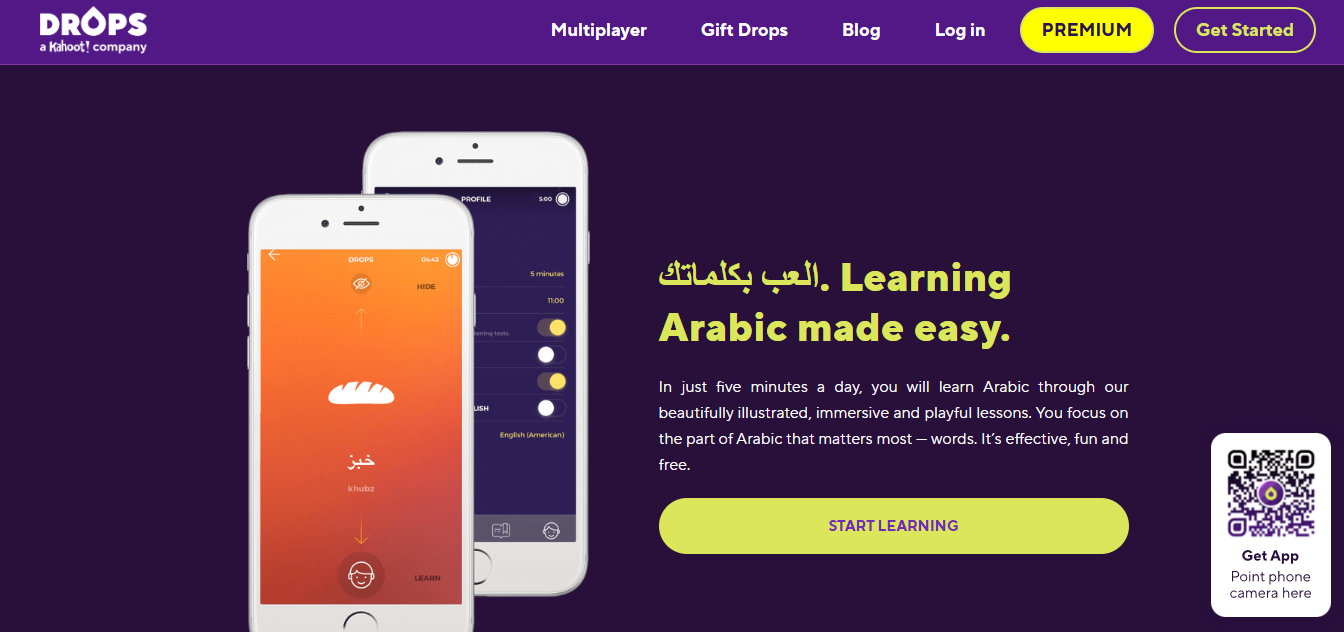
Drops teaches high-frequency vocabulary through five-minute visual sessions that marry gamification and mnemonic images. It’s a great way to build useful word banks without long-term commitments, especially for beginner-to-intermediate learners.
21. Mondly

Mondly uses speech recognition and short conversations to get you speaking early, which helps build confidence. Its conversational practice is accessible and beginner-friendly, helping learners overcome the anxiety of speaking aloud.
22. AlifBee

AlifBee focuses exclusively on Arabic, offering structured lessons and exercises tailored to:
- Script
- Pronunciation
- Practical vocabulary
Its specialization makes it a reliable choice if you prefer a single-focus app built by Arabic educators.
23. Tandem
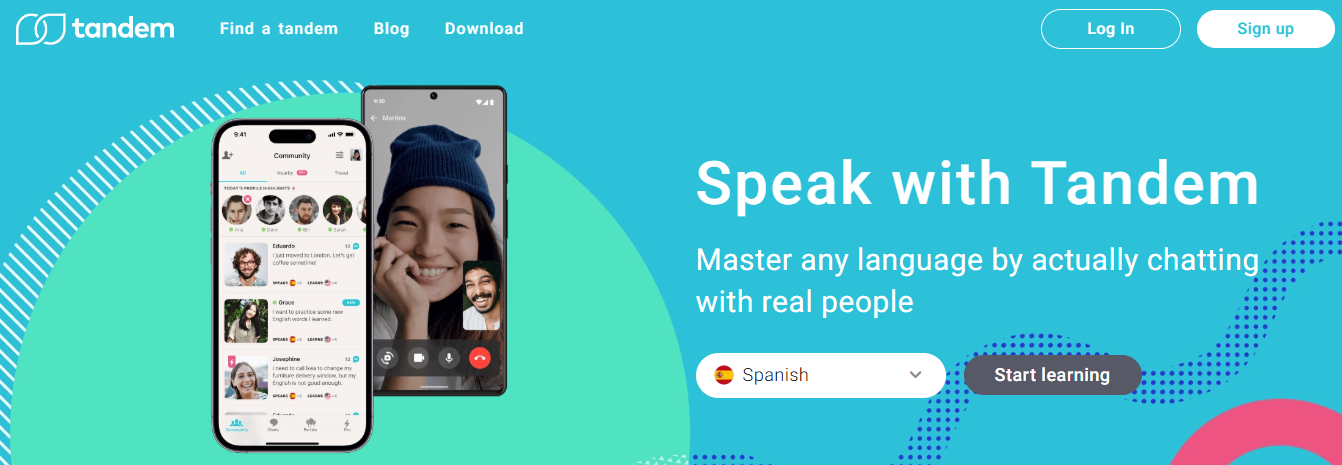
Tandem pairs you with native speakers for:
- Text
- Voice
- Video exchanges
It mirrors real social interaction. If your goal is to expand your accent variety and conversational flexibility, Tandem gives you exposure to different accents and colloquial styles.
From Recognition to Production: How Pingo AI Closes the Speaking Gap
What matters most when you choose is whether the app forces you to produce speech, or only to recognize input; recognizing is safe, making is the point. Many learners default to passive tools because they are familiar and low effort, which is understandable and often necessary when starting.
The hidden cost, however, is that those habits leave one speaking undertrained and with low confidence when honest conversations arise. That gap is where solutions like Pingo AI provide an alternative path, with scenario-based practice and instant, actionable feedback that compresses the time to usable fluency.
The Formula for Progress: Combining Conversation-First Apps with Complementary Tools
When learners tell me they feel stuck after months of study, the pattern is clear: repetition without real speaking practice stalls progress; targeted, feedback-rich speaking drills move learners forward.
This shows why pairing a conversation-first tool with complementary apps for script, grammar, and media exposure produces the best results.
Closing the Gap: Turning Occasional Practice into Measurable Speaking Gains
There are tools here for every learning constraint, whether you have:
- Five minutes a day
- Need offline audio
- Want a native-speaker exchange
It picks the combination that forces production, not just recognition, because that is the final failure mode of most study plans.
There are 22 countries where Arabic is an official language. That gap between study and usable speech is the problem, and what comes next will show how to turn occasional practice into steady, measurable speaking gains.
Related Reading
- Babbel vs Duolingo
- How Much Is Duolingo Max
- How Much Does Babbel Cost
- Rosetta Stone vs Duolingo
- Best Apps to Learn Spanish
- Best Apps to Learn Japanese
- Busuu vs Duolingo
- Duolingo Alternatives
How to Make the Most of an App (so it’s not just "fun" but effective)

Make the app force you to speak, measure what matters, and iterate on the weakest pieces of your output. Turn short, intentional speaking drills into repeatable feedback cycles so your practice builds usable fluency rather than a pleasant distraction.
How Should I Structure Daily Practice To Force Real Improvement?
While you mimic rhythm and intonation, start with concentrated speaking sprints, not passive scrolling.
A reliable sequence I use with learners is:
- One 5-minute Tutor Mode scenario where you talk
- One 4-minute targeted pronunciation drill
- One 3-minute shadowing of a native clip
Finish by saving the session recording and tagging the two most significant errors. Treat that 12-minute block as the unit of work you repeat three to five times per week, then swap scenarios to avoid habituation.
What Specific Output Should I Track?
Track output quality, not time. Measure the percent of phrases you produced without correction, average hesitation before answering, and the number of error types repeated week to week.
Log a weekly 2–3 minute spoken monologue and compare it to the previous week for clarity, speed, and grammar drift. This shifts your focus from “hours used” to measurable gains in spoken production, the actual currency of fluency.
How Do I Make Mistakes Accelerate Learning Instead Of Killing Motivation?
This problem appears across self-study and tutoring contexts:
- Learners avoid messy errors
- Progress stalls
Force a small list of recurring errors into every practice cycle, then isolate them into micro-drills for spaced repetition. Use focused variation, practicing the same grammatical form in three different real-world scenarios, because interleaving corrects transfer problems faster than blocked repetition.
Converting Passive Minutes: Pingo AI's Formula for Deliberate Spoken Output
Most learners accept a passive routine because it feels safe; that makes sense, but it has a cost. As practice stays recognition-first, spoken confidence lags, and honest conversations expose gaps.
Platforms like Pingo AI compress that friction by giving learners ultra-realistic speaking practice, instant, actionable feedback, and scenario ladders that push production early, converting passive minutes into deliberate spoken output.
What Features Should You Exploit To Scale Gains Without Burning Out?
Use features that scaffold effort: adjustable-speed native audio for shadowing, waveform playback to match prosody, and an error history you can export as a practice checklist.
Automate a weekly review, where you replay three saved sessions and annotate the persistent mistakes. Small, consistent investments in these tools beat sporadic marathon sessions because they create repeatable learning signals.
Do Apps Actually Change How People Learn?
According to the App Usage Survey (2022), 75% of app users report increased productivity after using the app for a month, suggesting that the mechanics of app-driven routines can translate into real practice when used with intention.
And the Digital Productivity Study (2023) finds 60% of users find apps more effective than traditional methods for task management, which explains why a structured in-app workflow that forces speaking will outperform vague study plans.
What Commonly Derails Progress, And How Do You Protect Against It?
Inconsistent practice is the usual culprit, and it feels demoralizing when weeks of effort leave no usable improvement.
Protect against drift by building external accountability:
- A weekly recorded performance
- A short message to a language partner
- A fixed Tutor Mode appointment
When learners bind their practice to an outside marker, adherence climbs and plateaus break.
How Do You Keep Practice Precise And Interesting Over Months?
Treat your practice like a laboratory:
- Vary contexts
- Raise difficulty in one dimension at a time
- Log the results
Use a simple progression rule: once you produce a scenario correctly three times across different days, increase complexity by adding one new variable, such as time pressure or an unfamiliar noun. That keeps learning challenging but not chaotic.
Stop Sabotaging Your Progress: Why Intentional Practice Must Precede Feature Choice
Practice with intention, measure what you actually produce, and force recurring errors back into short, distributed drills; do that, and your app time stops being entertainment and starts being craft work.
That change feels small at first, but the next decision you make about which app features matter will reveal why many choices that seem obvious are quietly sabotaging progress.
How to Choose the Right Arabic App for You

Choose an app that forces you to produce speech, makes the script usable when you need it, and clearly states whether lessons are in Modern Standard Arabic or a dialect.
Test that claim in short, focused sessions and decide based on what your mouth can do after ten minutes of practice, not what the lesson map looks like.
How Do I Test Whether An App Actually Makes Me Speak?
Run a ten-minute audition. Open a single lesson and do three things:
- Read a short native audio clip aloud
- Repeat a prompted phrase until you can say it without pausing
- Complete a two-line dialogue, supplying one turn
If the app records your voice, plays it back, and gives targeted corrections you can act on in the next attempt, it has passed the core speaking test. This matters because the common failure is glossy vocabulary that never becomes usable speech; learners get frustrated when words live only in recognition exercises.
How Can I Confirm Dialect Versus MSA Coverage?
Ask for explicit labeling in the first lesson and probe with sample dialogues, not lesson descriptions. Find a lesson where a native speaker uses everyday conversation, then listen for regional markers like pronunciation of QAF or common colloquial verbs; if that sample is missing, the app probably conflates varieties.
The pattern I see across beginners is confusion from mixed content, so demand clarity up front: your goal should determine whether you prioritize news-style MSA or quick-access dialect training.
What Should I Check About The Script And Reading That Goes Beyond Tracing Letters?
Look for progressive reading tasks that move from isolated letters to connected words to short sentences, which you read and then speak aloud. Handwriting tracers are fine, but the crucial test is whether the app forces reading aloud and corrects misreadings.
If the letter modules never require you to produce connected text under time pressure, the script skill will feel fragile in real use.
Which App Metrics Actually Mean Something For Learning Quality?
Popularity and satisfaction are signals, not proofs. For reach, note that the app lists over 1 million downloads on AppstoreSpy (2023), indicating broad install volume but not guaranteeing active engagement.
For quality, consider the 4.5-star average rating reported by AppstoreSpy in 2023 as a positive signal when paired with recent, detailed reviews of speaking features and correction quality.
AI: Bridging the Passive-to-Active Speaking Gap
Most learners handle practice with passive apps because they are low-friction and habit-friendly, and that approach works early on, especially for memorizing words.
Over time, though, the hidden cost appears:
- Recognition-first routines leave speaking undertrained
- Confidence collapses when a real conversation begins
That gap explains why solutions like AI language learning apps focus on conversation-first practice, automated corrective feedback, and scenario drills that turn passive minutes into repeatable speaking gains.
How Should Trial Periods And Pricing Influence My Choice?
Treat a trial like a lab: only pay once you can show measurable gains after the trial window. Check what content is behind the paywall, whether progress exports or saved voice recordings are available for review, and whether refunds are time-limited.
A short free tier is useful for habit-building, but a meaningful trial will let you test speaking throughput, not only lesson count.
What Red Flags Mean An App Will Stall Your Spoken Progress?
Avoid apps that offer speech recognition that never corrects prosody, lessons that mix dialects without labels, or vocab banks with no sentential context. If reviews repeatedly complain about vague feedback or if the app lacks any way to save and review your recorded attempts, plan to switch; those are the failure modes that silently erode progress.
A practical audition checklist to carry into every app:
- One recorded dialogue
- One spoken reading of a connected sentence
- Scoped feedback you can act on immediately
- Explicit dialect labeling
- Exportable error notes you can study between sessions
If the app delivers on those five checkpoints, it will earn a place in your rotation.
Habit-Forming AI: Making Conversation Practice Daily
Pingo's AI language-learning app is redefining language learning through conversation-first practice, powered by expressive AI. Start speaking with Pingo AI for free and experience how adaptive feedback and scenario practice turn short sessions into real, usable fluency.
That seems decisive, but the real challenge is turning those checks into a daily routine that actually moves your speaking forward.
Related Reading
- Memrise vs Duolingo
- Best Apps to Learn French
- Lingodeer vs Duolingo
- Pimsleur vs Babbel
- Jumpspeak vs Duolingo
- Best Apps to Learn Mandarin
- Best Apps for Learning English
- Best Russian Learning Apps
10 Best Tips for Learning Arabic

These ten tips give you a practical, speaking-first plan:
- Prioritize production over passive review
- Structure short speaking sprints
- Build feedback loops that force the same errors back into practice until they stop repeating
Follow them in sequence, and you will convert recognition into usable speech faster than random study.
1. Keep A Vocabulary List
Treat your list as a production toolbox, not a passive bank. Write each new word in a short sentence you will actually say, tag it by situation (food, travel, work), and review aloud three times across a week. Use spaced repetition to schedule reviews, but test yourself by producing the item in a one-minute spoken monologue.
Learn titles like أستاذ / Ostath, أستاذة / Ostatha, and آنسة / Anesa so you can open conversations respectfully, and add common conjunctions and linking phrases so your sentences flow. Aim for five high-utility items a day and fold idioms into role-play lines so they become natural.
2. Rehearse
Prepare short scripts for the situations you expect, then perform them under mild pressure. Make a sheet of frequently asked questions about yourself, your job, and your hobbies, and practice answering them aloud until you can speak without searching for words.
Record:
- One-minute rehearsals
- Listen back
- Label the two most repeated errors
- Run five focused attempts to erase them
This turns rehearsal from comfort practice into deliberate corrective work.
3. Surf the Internet for Online Arabic Sources
Pick content that forces comprehension and speech, not just passive listening. Download transcripts of news clips and read them aloud as you listen, or grab a short YouTube clip in a dialect you need and shadow one sentence at a time.
If you need scale and context, remember that approximately 300 million people worldwide speak Arabic. Use that to choose materials with broad reach, but prioritize clarity:
Pick speakers with clear enunciation for early shadowing, then graduate to faster, natural speech.
4. Learn the Arabic Alphabet
Move from letters to connected text with spoken drills. Practice the four contextual forms of each letter, then time yourself as you decode single words aloud for 1 minute each day. Add minimal-pair drills for new sounds, and pair tracing with saying the sound to build muscle memory.
Reading aloud forces orthography and pronunciation to converge, which shortens the gap between recognition and production.
5. Improve Your Arabic Grammar
Treat grammar as a production scaffold, not a rulebook to memorize. Pick one structure, for example, verb conjugation in the past tense, and produce it in five different situational lines across three days.
Use interleaved practice: mix singular, plural, masculine, and feminine forms in the same session so you learn to switch under real-time pressure. Log the most common grammar slips and return them to short, timed dialogues until they stop recurring.
6. Join Online Arabic Communities and Forums
Find partners who will push you to speak regularly and give actionable corrections. Agree on clear correction rules, for instance, two corrections per voice message and one suggested phrasing, so feedback stays usable and not overwhelming.
Structure exchanges as short tasks, for example, a 90-second voice update and a 30-second reply. This creates repeated, focused production with real listeners, which is the closest substitute for in-person practice.
7. Immerse Yourself in the Language and Its Culture
Integrate ambient exposure into daily life so Arabic becomes the default language for everyday tasks. Change device language settings, label household objects in Arabic, listen to short podcasts at breakfast, and cook while following an Arabic recipe aloud.
Because over 1.5 billion Muslims use Arabic in religious contexts, you will find a vast archive of recitations and spoken material to practice rhythm and cadence; use those recordings for slow shadowing and prosody work.
8. Practice Shadowing Native Speakers
Shadowing is precision training for accent and fluency. Choose short clips under 30 seconds, play them at 75 percent speed, and repeat immediately, focusing on matching rhythm and intonation rather than perfect pronunciation at first.
Record a side-by-side run, then compare the waveform or playback to the target phrases and identify the syllables that need tightening. Keep pace naturally; over-perfect slowing creates habits that break at normal speed.
9. Normalize Making Mistakes
This is the emotional hinge of progress. The pattern appears consistently: learners duck messy errors, practice stays safe, and weeks of study produce no usable speech.
Force the opposite:
- Nominate two recurring errors each week
- Build three micro-drills around them
- Rehearse until hesitation drops
Treat mistakes as data, not failure; each recorded slip points to a surgical drill that closes that gap faster than a more passive study.
10. Take Some Time Off
Plan recovery into your schedule so consolidation happens. After an intense three-day speaking push, shift to low-effort exposure for 48 hours, such as passive listening to familiar stories while walking.
Sleep and spaced recall after rest consolidate gains; think of practice blocks like weight sets and rest as the recovery that makes the lift stick.
AI: Activating Spoken Fluency through Production
Most learners follow recognition-first routines because they are familiar and low-friction, which makes sense early on.
As practice scales, that approach creates a hidden cost:
- Spoken output stays undertrained
- Confidence lags when honest conversations start
Solutions like Pingo AI provide an alternative path, with ultra-realistic AI voices, Tutor Mode, and 200-plus scenario lessons that force production and give immediate, actionable feedback. Every minute of practice converts into usable phrases.
From Targeted Practice to Daily Habit
A useful image: Think of your speaking skill as a rusted hinge, not a missing bolt; targeted, repetitive oiling where the hinge squeaks removes the resistance, and occasional heavy pushes test whether the repair held.
That seems like closure, but the real shift comes when you turn these tips into a repeatable daily habit.
Start Learning A Language with Pingo for Free Today
If you are tired of grammar-first apps that keep practice comfortable but leave you frozen in real conversations, consider Pingo AI, the conversation-first AI tutor that forces production with scenario practice and instant, actionable feedback.
We recommend short, focused sessions to test whether speaking-first drills boost your confidence. Pingo AI supports 20 languages and has over 1 million downloads.
Related Reading
- Best Apps for Learning Korean
- Best Apps for Learning Spanish
- Best Apps for Learning Portuguese
- Best Apps for Learning Spanish
- Best Apps for Learning Russian
- Best Apps for Learning Italian
- Best Apps for Learning German
- Best Apps for Learning English
- Best Russian Learning Apps